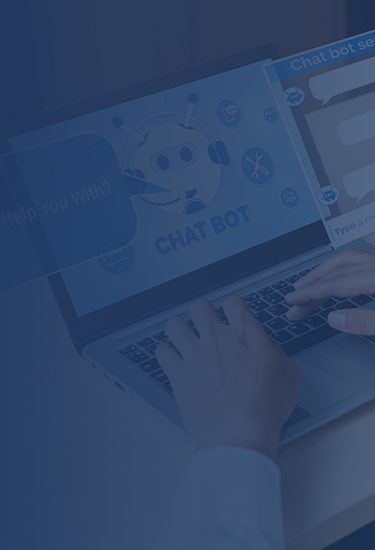As the digital workplace continues to rapidly expand, it shouldn’t come as a surprise that robotic process automation (RPA) solutions are following suit.
In fact, the RPA market was worth an estimated US$2.65 billion at the close of 2021, with a projected CAGR of 27.7% from now until 2030.
In other words, the RPA market is on track to hit US$23.9 billion by 2030, signifying a massive shift in the way humans and AI interact in the workplace.
Add this to the fact that up to 25% of employees spend time and resources on unnecessary manual tasks that are now fully automated, and it’s easy to see that RPA — and intelligent automation — provide robust benefits to businesses willing to implement digital strategies and AI solutions for the future.
Read on to learn the basics of RPA and some of the biggest benefits it has to offer.
Understanding RPA: Robotic Process Automation
In its most basic form, RPA refers to software designed to automate various rules-based business operations and repetitive manual tasks. It aims to boost efficiency, productivity, and accuracy across the business.
Whether your business leverages simple RPA or more intelligent automation like AI, IDP, or Digital Workers, there’s no denying what a business can accomplish with a unified digital and human workforce.
The Value of RPA
Today, RPA is becoming an integral component of the modern business landscape. The world’s leading brands use RPA processes to unlock future expansion in an era defined by an emerging digital workforce, AI, and cloud-based solutions.
Automation technologies offer significant benefits to virtually every industry, especially in departments with repetitive, manual tasks.
So, what are the biggest benefits RPA has to offer to businesses today?

9 Benefits of RPA for your Business
Below we will outline ten benefits of robotic process automation and explain how companies around the globe use RPA software to upgrade business processes, enhance analytics, meet compliance, and manage human resources.
#1. Automate Simple Manual Tasks
One of the most significant benefits of RPA is that it cuts down on time spent on manual processes meaning employees have more time to focus on creative tasks that add direct value to the company.
A Deloitte survey showed that 56% of its respondents have already implemented RPA technology, with expectations of a global takeover in as little as five years.
#2. Enhance the Customer Experience
Bots are always working, and with much more accuracy, speed, and scale than humans can. As a result, tasks are completed far quicker and with fewer mistakes.
Using bots to automate tedious rule-based activities like data collection, reporting, and onboarding allows your business to streamline development and focus on enhancing the end-user experience.
#3. Unify Humans and Digital Workers
RPA creates a way for businesses to merge digital workers with the human workforce. When unifying humans and AI, scalability is no longer an issue because automation provides seamless solutions to help you expand your business with fewer human resources.
This allows your human workers to focus on more strategic and creative tasks while leaving the more tedious and mundane processes to automated bots.
#4. Boost Efficiency and Productivity
Implementing RPA processes improves productivity and efficiency by automating manual tasks for every aspect of your business.
According to Deloitte’s third annual RPA survey, “RPA continues to meet and exceed expectations across multiple dimensions including improved compliance (92%), improved quality/accuracy (90%), improved productivity (86%), cost reduction (59%).”
With more sophisticated automation solutions leveraging machine learning and AI, you can expect this trend to continue.
#5. Increase Revenue and ROI
Businesses employing RPA technologies reported 10 to 40 percent measurable cost reductions during initial deployments.
There are also reports of companies achieving ROIs of up to 200% during the first twelve months, with bots accounting for a mean of 20% FTE capacity.
Automating manual tasks ensures your employees can stay focused on revenue-generating activities and providing the best customer experience possible.
#6. Reduce Human Error
RPA bots reduce the risk of manual errors associated with data management, authorization, and even help identify cyber-attacks that humans may overlook.
A reduction in data entry has far-reaching advantages, especially for financial services involving audits, taxes, and private customer data.
When automation is configured correctly, there is less risk associated with data being entered incorrectly throughout the data entry process.
#7. Better Data Quality & Analytics
Since RPA eliminates the risk of error, your overall data quality is better, too.
High-quality data translates to streamlined processes. It also provides you with detailed performance analytics that you can use to measure the effectiveness of any automation solution, create data benchmarks for various departments, and helps you identify new areas and processes that may be ideal candidates for automation.
#8. Decreased Turnover Rate
It’s safe to say humans tend to be happier at their jobs when it includes tasks that allow them to learn new things and engage with activities outside of data collection.
By handing the monotonous jobs over to automated bots, your workforce is likely to see decreased turnover rates.
#9. Streamline Compliance and Minimize Fraud
RPA offers a lot of value when it comes to streamlining compliance and combating fraud.Automating the processes that involve managing sensitive customer data reduces the risk of a human mishandling that critical data since automation handles the various processes related to collecting, extracting, and processing PII.
Looking to Kickstart Your Automation Journey?
Whether you’re automating financial processes, data extraction, or something else, there’s no denying the immense benefits RPA and intelligent automation have to offer to businesses in all industries.
Are you looking to kickstart your robotic process automation journey? See how our TiA Tangentia digital workers can transform your internal processes. Book a demo today to get started.

































 George Bennett, VP of Business Development at Tangentia says “I am honored to be part of an organization that is rapidly expanding and delivering impactful solutions to its customers that change the way people work. The need and demand for Robotic Process Automation will continue to grow as more organizations of all sizes look to ensure business continuity and streamline their workforce.” George is a graduate of the prestigious West Point Military Academy and has managed more than 300 million dollars in revenue when at FileNet which was bought by IBM. He was also a member of the US WaterPolo Olympic team.
George Bennett, VP of Business Development at Tangentia says “I am honored to be part of an organization that is rapidly expanding and delivering impactful solutions to its customers that change the way people work. The need and demand for Robotic Process Automation will continue to grow as more organizations of all sizes look to ensure business continuity and streamline their workforce.” George is a graduate of the prestigious West Point Military Academy and has managed more than 300 million dollars in revenue when at FileNet which was bought by IBM. He was also a member of the US WaterPolo Olympic team.



